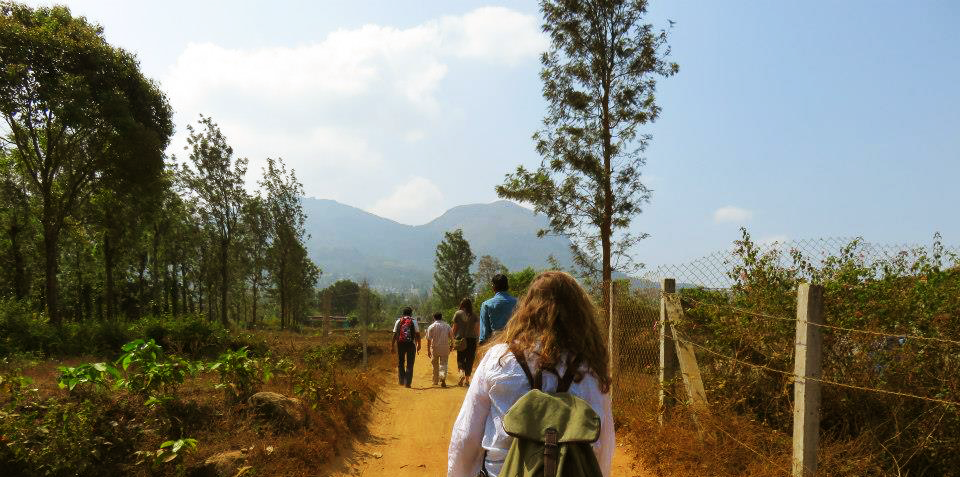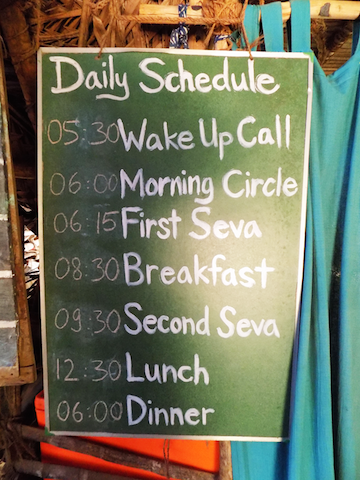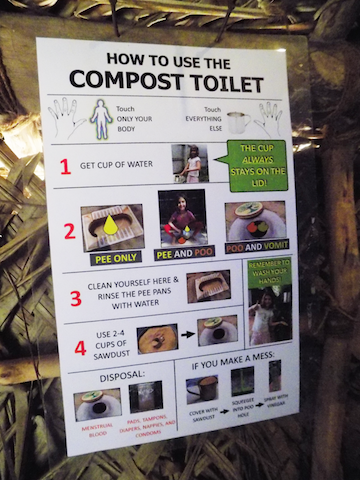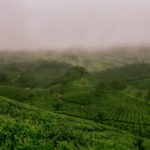Sustainable Living in India: A Visit to Sadhana Forest

Sustainable Living in India: A Visit to Sadhana Forest
I struggle with sustainable living at home. While I could go out of my way to change my habits, the American culture of consumption encourages wasteful behavior. I can recycle, eat locally, avoid disposable products, and shop at thrift stores all I want, but then eat out at a chain restaurant with my friends every weekend and increase my carbon footprint. Americans, in particular, are conditioned to live this way. We accept it as a societal problem, not a personal one. As an ecofeminist, these behaviors feel rather hypocritical.
I constantly search for new ways to form more sustainable habits. When I committed to a semester abroad in South India, I hoped to find some eco-conscious inspiration. Earlier this month, I visited Sadhana Forest in Auroville, Tamil Nadu.
Sustainable Living in India: A Visit to Sadhana Forest
An Environmental Commune in India
The Sadhana Forest, similar to an environmental commune in the United States, everyone shares responsibilities and possessions. It’s a collective dedicated to environmental conservation, and operates through a gift economy. Sadhana Forest commits to sustainable living, food security through ecological transformation, wasteland reclamation, and veganism.
They conserve water that “allows villages to cultivate their food and prevents exodus towards nearby city slums;” plants indigenous plants that surround the unique ecosystem within the region; and educates children from nearby villages. I saw this as the progressive opportunity I was looking for.
As a practicing vegan, the community felt extraordinarily welcoming. It was refreshing to be introduced to a vegan community built on non-violence against animals. Three weeks before my trip, I transitioned from a vegetarian to vegan diet. I refrain from eating animal products, which includes meat, dairy, eggs, and honey. India is a great place for vegans, and it was refreshing to find a like-minded community.
“Sustainability requires diligence, creativity, and strategic planning. Every little step has the potential to make a difference.”
I arrived in the late afternoon and stayed overnight. The next morning, I was woken at 5:30 am by a human alarm clock. Meals and volunteer work, or seva as it is called in several Indian languages, organize the day. At the crack of dawn, I headed out to the fields.
Sadhana Forest practices “bunding” to plant trees. Bunds, carved into the ground, collect water to increase water filtration and prevent soil erosion. This technique allows plants to proliferate in an otherwise difficult environment. Since 2003, Sadhana Forest has planted trees over 55 acres.
During the second seva session of the morning, I helped prepare lunch. The kitchen is free from non-vegan, processed food and ingredients, so everything was local and organic. I chopped onions, cut oregano, cracked open coconuts, and soaked potatoes.
The forest provided every resource we need to survive.
Between volunteering and eating, there was a lot of social time. Every Monday night after dinner, the volunteers gather for a sharing circle, to express how they felt during the past week. Films, lectures, and workshops on environmental issues are scheduled throughout the week. In the short time I was there I met awesome people from all over the world, including Australia, Sweden, and Taiwan.
In just a single day I felt involved in the surrounding environment. The forest provided every resource we need to survive. I washed dishes with coconut brushes and charcoal ash. I used soap made from vegetable oil to wash my hands. And, I used a compost toilet (pretty much just a hole in the ground). Everything felt inter-connected.
I learned that it is possible to change my habits and combat the climate crisis. However, this requires a holistic approach to sustainable living. It’s not just about the food we eat, but how far it travels to get to our plates. It’s not just about how much water we conserve, but how much we don’t need.
Sustainability requires diligence, creativity, and strategic planning. Every little step has the potential to make a difference.
Communities like Sadhana Forest exist all over the world. This opportunity sparked my interest in communal living. I am thrilled to explore similar opportunities, including environmental communes, when I return home. I am inspired to rekindle my passion for activism and sustainable living.
For more information about the Sadhana Forest, visit their website. They have sister locations in Haiti and Kenya.
Sustainable Living in India: A Visit to Sadhana Forest
Related Reading
Young, Stupid and Free in the Indian Himalayas
Have you traveled to the Sadhana Forest in India? What were your impressions? Email us at editor@pinkpangea.com for information about sharing your experience and advice with the Pink Pangea community. We can’t wait to hear from you.
Sustainable Living in India: A Visit to Sadhana Forest photo credit: Danielle Corcione











Amazing blog post